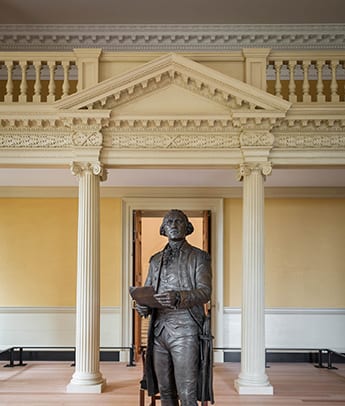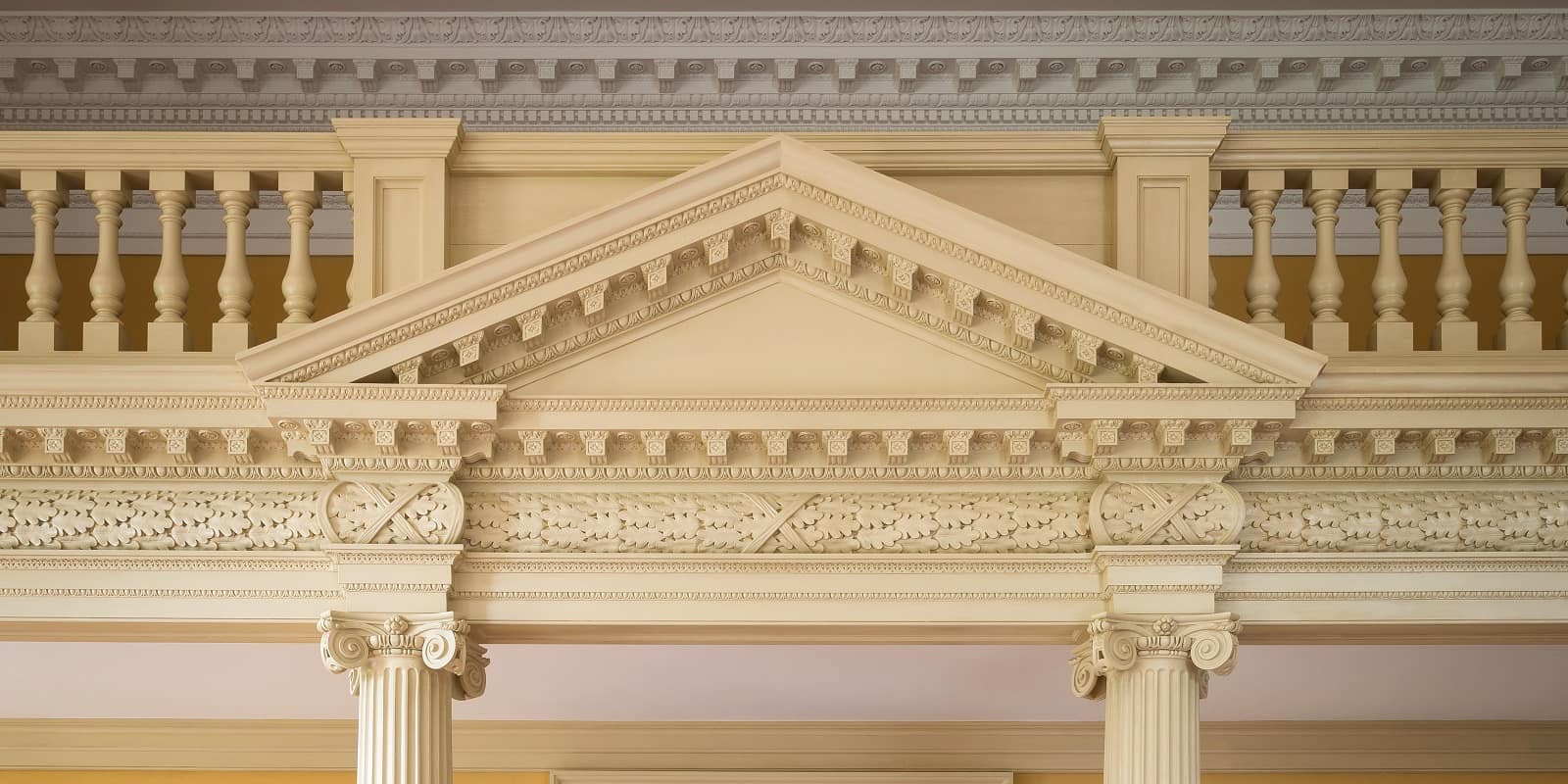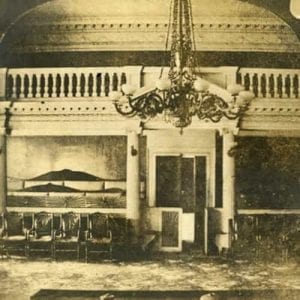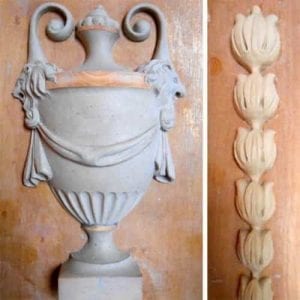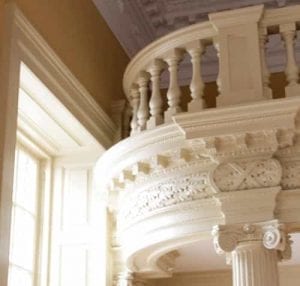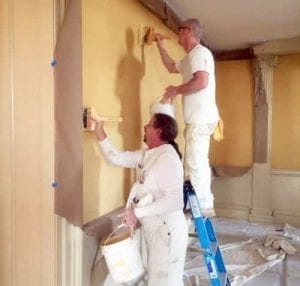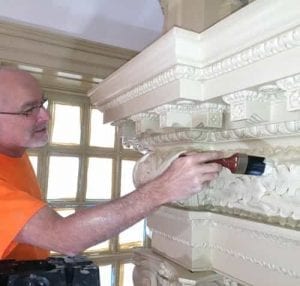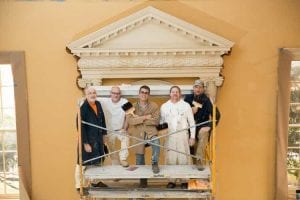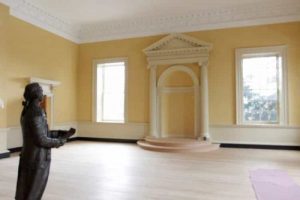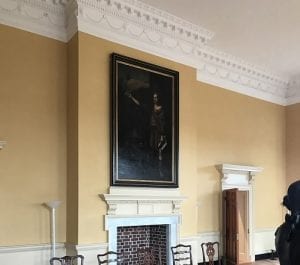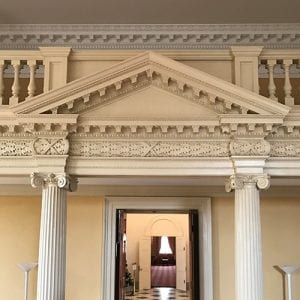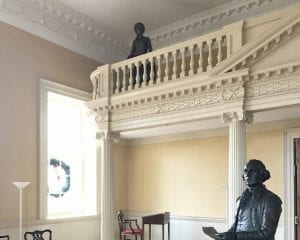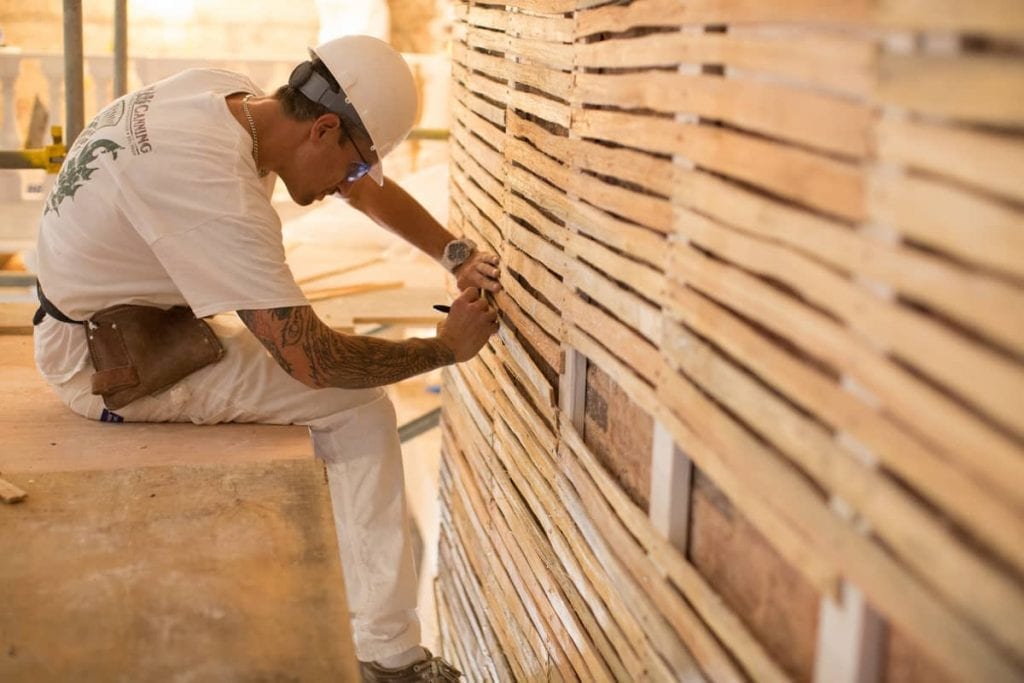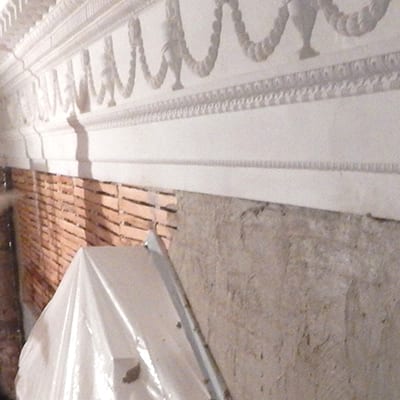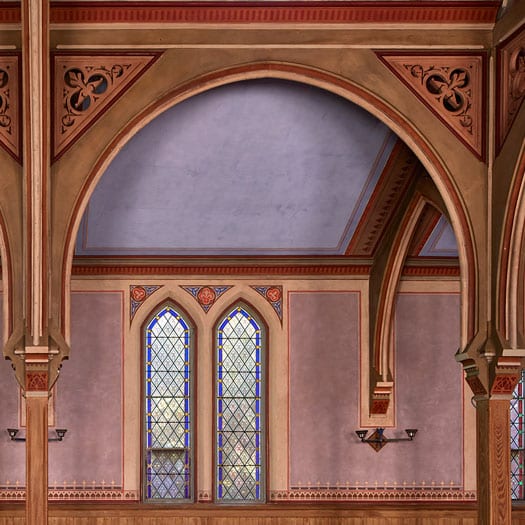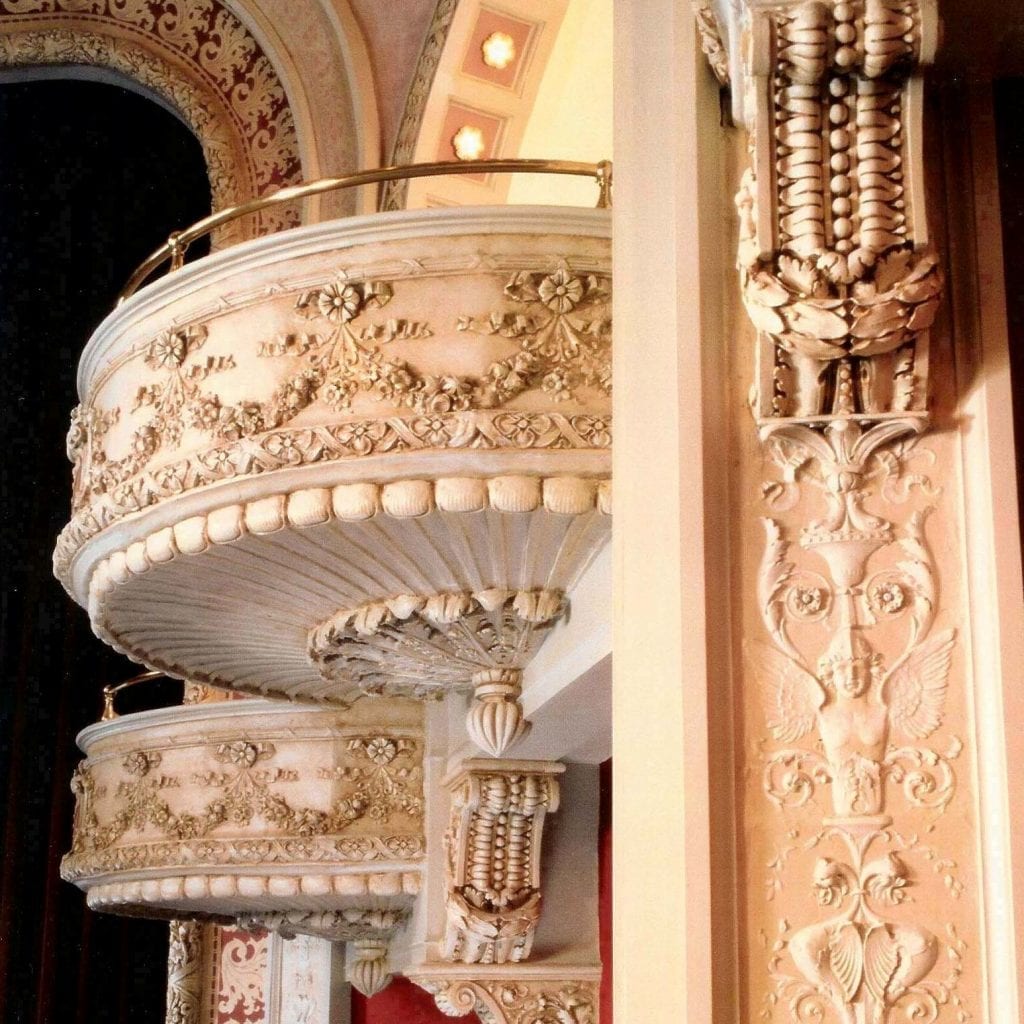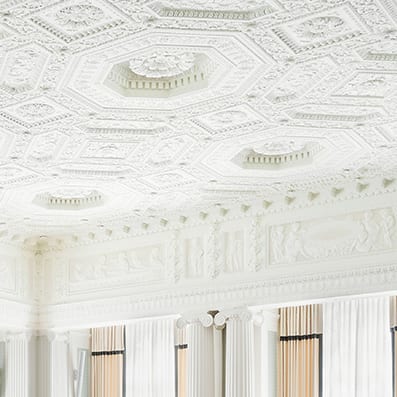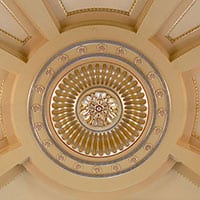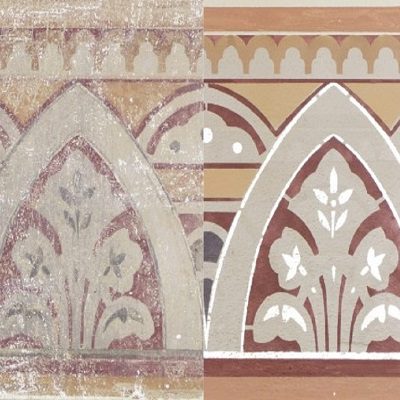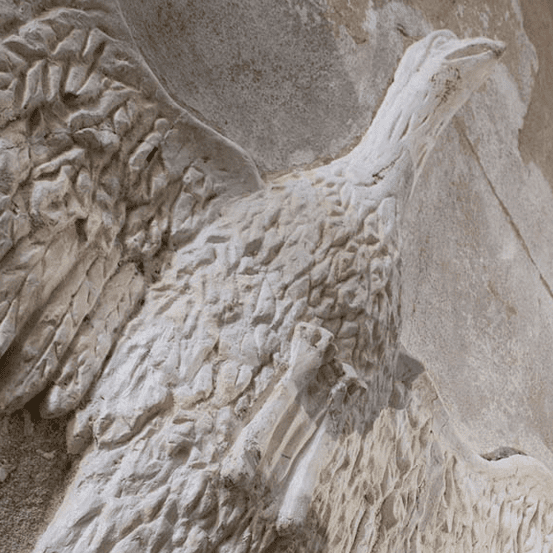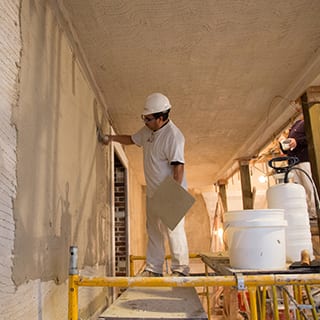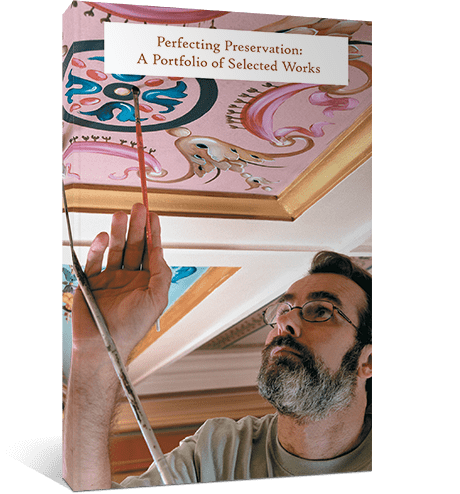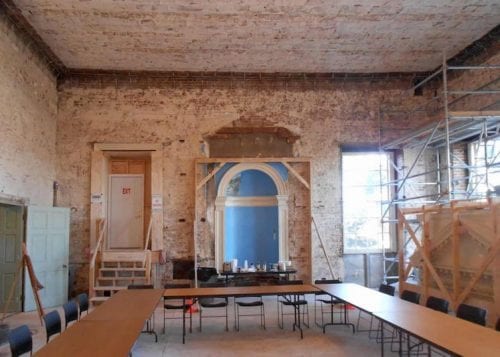
Old Senate Chambers completely gutted.
As promised in our newsletter, as we anticipate the grand opening of the Maryland Old Senate Chamber at the end of this month, we would like to share a few of our project photos and what went into restoring the room back to the eighteenth century.
The project is a favorite of ours because of the history behind it. Much more than a period restoration, we were restoring the Maryland Old Senate Chamber back to the day George Washington, resigned his commission.
To begin with, the room was completely gutted and we were using historical photographs, paintings and archival research to make sure our work was historically accurate.
As all the elements came together, the room was once again whole and history was quickly becoming a reality.
The first task was properly reinstating the cornice and frieze that encompassed the room and using our research, floral swags, rosettes and other essential features of were drafted and reproduced into a full scale clay model. Each clay model was then used to create flexible rubber molds and cast using traditional molding plaster.
Hundreds of small cast ornaments and rosettes were made for the cornice and frieze around the room. The cornice was cast in large sections and hand tooled after installation in order to make it whole.
The next step in the plaster restoration was the installation of the lath, applied to the walls and ceiling. The lath consisted of hand split old growth yellow pine. A three coat plaster system was applied using high calcium lime plaster that was flaked for over one year and hog hair fiber was mixed in for reinforcement.
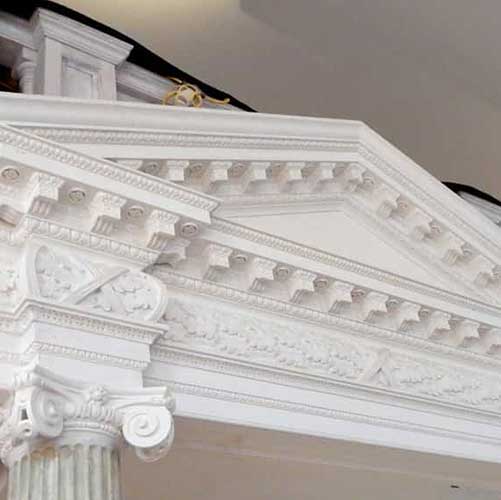
Maryland Old Senate Chamber Restoration – Pediment
We discussed the ornamental and flat plaster process of the Maryland Old Senate Chamber restoration. As each plaster element was applied, fabricated, and installed, the Chamber appeared more and more as George Washington would have seen in during his resignation speech. The final elements in restoring the room were the painted finishes. True and faithful to the restoration process, traditional soft distemper paint was used. Distemper paint is the ideal paint for traditional lime plaster. It dries to a very desirable soft matte finish and, since it is high in permeability, allows the plaster to breath and thoroughly cure. It is important to note that soft distemper paint is water soluble and can easily be damaged with water.
Soft distemper paint consists of five ingredients: pigment, binder, preservative, hardener and retarder. For the ceiling, powdered whiting was used as the pigment and rabbit skin glue as the binder. Preparing the paint is a two day process, consisting of soaking each element in water before thoroughly hand mixing them together, the distemper resembles a whipped jelly that is easily brushable. Using traditional pure bristle distemper brushes several decorative painters had to work in unison, constantly maintaining a continuous wet edge.
For the walls, dry pigments of raw sienna and yellow ochre were soaked overnight to create the original yellow color.
Finally, an old fashioned linseed oil paint was applied. Dry pigments of white and raw umber were ground in oil and thinned with turpentine, driers and a small amount of varnish. Traditional brushes were also used for the application of the linseed oil.
Our efforts proved to be successful as the original finishes in the room were restored. Everyone involved with the project worked together to have a fully restored and successful project from the ceilings to the dowel assembled wooden floors.
